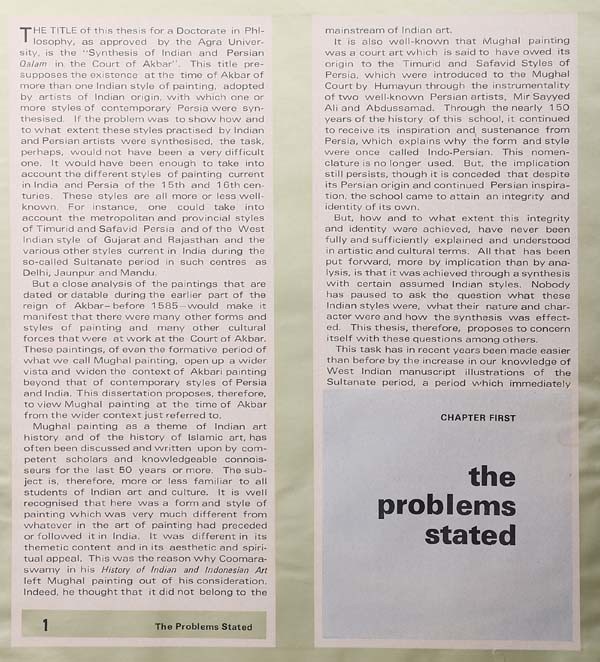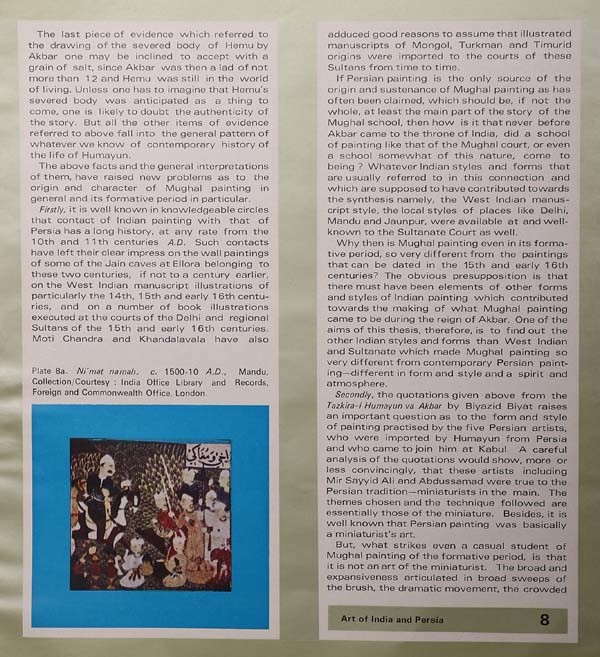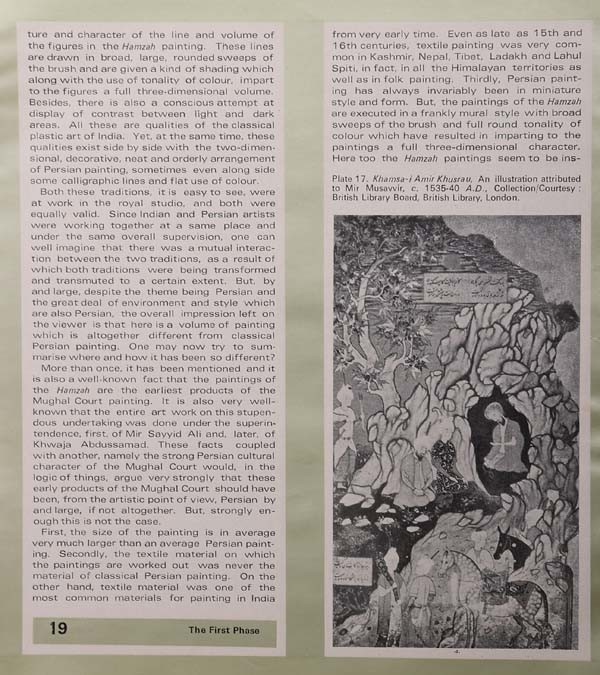
Art of India and Persia (An Old and Rare Book)
Book Specification
| Item Code: | AZF558 |
| Author: | Anis Farooqi |
| Publisher: | B.R. PUBLISHING CORPORATION |
| Language: | ENGLISH |
| Pages: | 104 (Throughout Color Illustrations) |
| Cover: | HARDCOVER |
| Other Details | 11.00x9.00 inches |
| Weight | 829 gm |
Book Description
The present book which is based on the author's thesis entitled "The Synthesis of Indian and Persian Qalams in the Court of Akbar" has a well-defined objective. There was a time when the Mughal painting was regarded as a colonial manifestation in India of the classical Persian painting of the Timurid and Safavid periods Safavid periods. The Modern art critics do not accept this view. There is no doubt that the Mughal painting was inspired by, and derived from, the classical Persian painting, but eventually, at any rate by the time of Jahangir, it came to achieve an identity and integrity of its own. This is supposed to have been achieved through a process of fusion and synthesis between Persian and Indian visions of form and styles of execution. Though this view is now held widely none of the art-critics has established the point through a careful analysis of some of the best paintings belonging to the Indian and Persian Qalams and an intensive study of primary and secondary sources.
Mughal Art is now recognized on all hands as a genre of its own. But early in the present century art historions styled it as Persian, Colonial Persian and Indo-Persian, stripping it of its indi viduality and considering it as no more than a transplantation of the dominant style of painting of the Safavid period on the Indian soil. Such a view gained sustenance from certain historical facts. When Emperor Humayun (1508-1556) was driven out of India by the Afghan ruler Sher Shah in 1543, he received a warm welcome at the Court of his cousin, the great Safavid ruler and patron of art and culture, Shah Tahmasp. When, after the death of Sher Shah, Humayun returned to India in 1555, he was able to bring with him-thanks to Shah Tahmasp's advancing age, growing religious fervour and dwindling interest in art-two great Iranian painters, Mir Sayyid 'Ali of Tabriz and Khwaja 'Abd al-Samad of Shiraz, known as Shirinqalam or [wielder of] Sweet Pen. Humayun lived for just one more year, before the two Iranian artists could pro perly organize a royal studio.
**Contents and Sample Pages**










